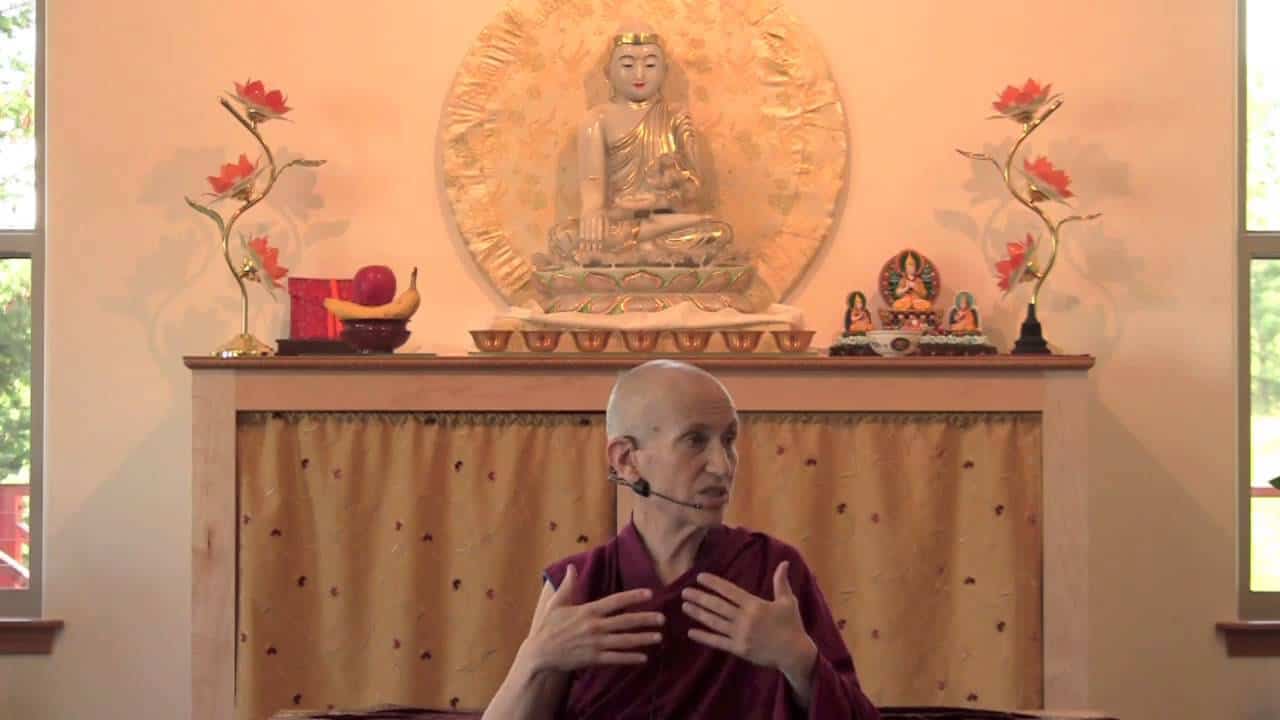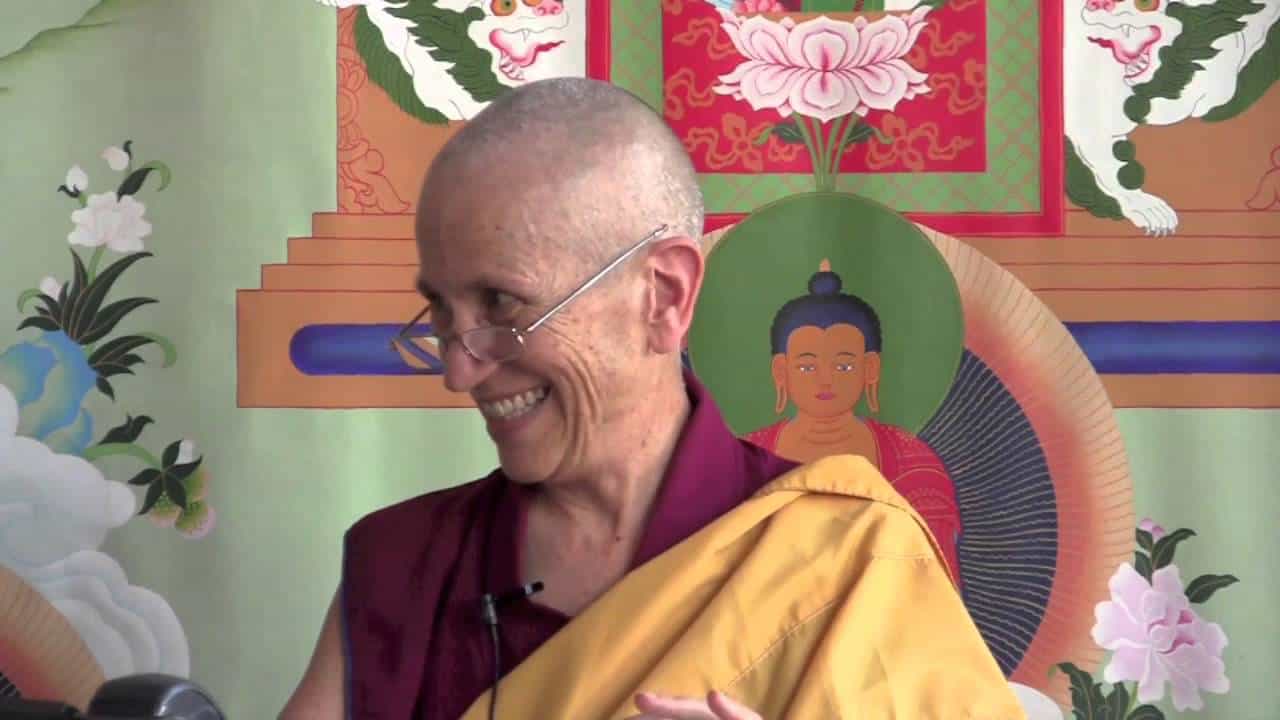Verse 103: The freedom of realizing emptiness
Part of a series of talks on Gems of Wisdom, a poem by the Seventh Dalai Lama.
- Perfection of wisdom
- Three types of wisdom
- Wisdom realizing emptiness frees us
- Gradual deepening of understanding
Gems of Wisdom: Verse 103 (download)
Who flies unobstructedly throughout the boundless skies?
One with a mind focused on emptiness, and who thus is forever free of hindrances.
This is the verse on the perfection of wisdom. When they talk about the perfection of wisdom they talk about three types:
-
One is the wisdom knowing the conventional truth, and especially what they call the five arts or the five sciences, which include poetry, grammar, astrology… All those things which were important then, but in our culture would include just having a broad general education so that you know how to relate to people and communicate the Dharma.
-
Then the second wisdom is the wisdom that knows the ultimate nature, so knows emptiness.
-
And the third is the wisdom to benefit sentient beings. So that goes into the same list of the various different categories that we’ve come across several times before.
But here, of course, it’s emphasizing wisdom realizing emptiness, because that’s the one that frees us from all our confines of the afflictions, and then after that from the cognitive obscurations.
So it’s hard to give a synopsis of the meditation on emptiness in a BBCorner. [laughter] Just let it be known that things don’t exist the way they appear. They do exist, but not in the way that they appear to us. When we’re able to realize that and see how it is that they really exist then we stop projecting things on to stuff that they don’t have. And it’s these projections, such as some kind of inherent nature or inherent goodness or inherent badness, that leads us then to generate afflictions that create the karma, that keep us involved in cyclic existence.
So we have to realize the ultimate nature, and then…. It isn’t like you realize it and “poof” everything’s gone the next day, or the next minute. But rather we have to train our mind in it and really habituate ourselves to this new perception, this new direct perception, because we have infinite lifetimes of imprinting our mind with the wrong kind of grasping, so we need to imprint the mind again and again with a correct understanding. And then first we eliminate the ignorance, the afflictions, the karma that causes rebirth, then keeping on meditating on emptiness, then we’re able to eliminate even the latencies of the afflictions as well as the subtle dualistic view that still remains. And when that is eliminated then you attain buddhahood and you can perceive both truths simultaneously. Before that you can’t perceive conventionalities and ultimate truths at the same time, because the appearance of conventionalities is so strong and so erroneous (because things appear inherently existent) that you can’t directly perceive emptiness at the same time. But by gradually bringing together our understanding of emptiness and dependent arising, then at buddhahood omniscience is attained whereby the mind can perceive and reflect all phenomena, whatsoever that exists, because all hindrances to not perceiving have been eliminated.
So let’s go for it!
[In response to audience] Learning all the teachings in emptiness and so on, it takes some time. But it’s just good, even in our daily lives, to at least remember impermanence, and remember things don’t exist as they appear. And just remembering that can help us question–when we’re getting angry and attached, or full of arrogance or full of jealousy, or whatever–it doesn’t exist in the way it appears to my mind. Then that gives our mind some space from immediately generating the same old afflictions and assumptions that we always do, and that continue to get us into trouble.
Venerable Thubten Chodron
Venerable Chodron emphasizes the practical application of Buddha’s teachings in our daily lives and is especially skilled at explaining them in ways easily understood and practiced by Westerners. She is well known for her warm, humorous, and lucid teachings. She was ordained as a Buddhist nun in 1977 by Kyabje Ling Rinpoche in Dharamsala, India, and in 1986 she received bhikshuni (full) ordination in Taiwan. Read her full bio.


